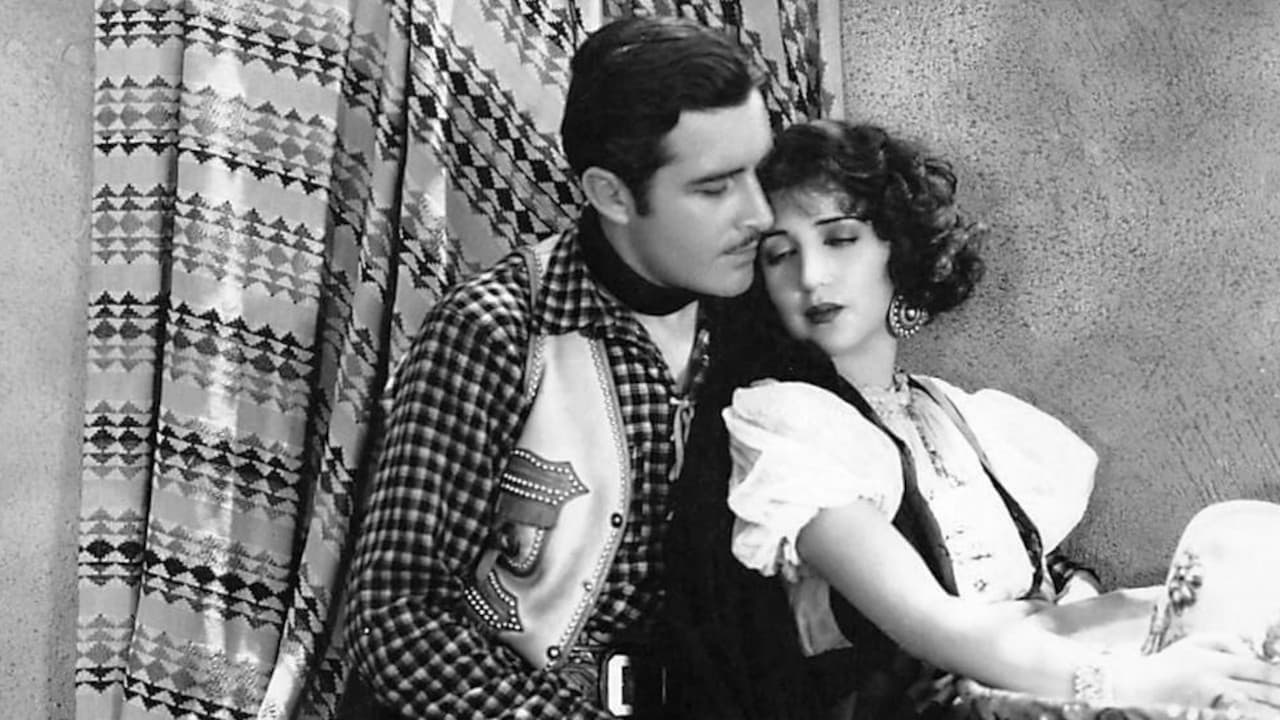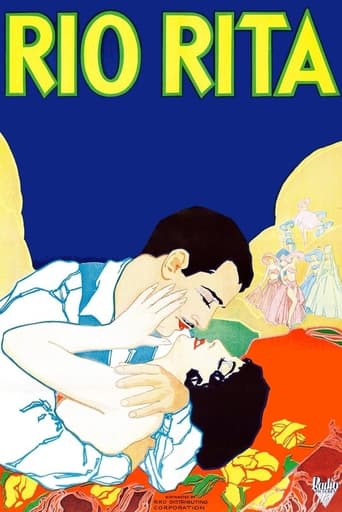

Just so...so bad
... View MoreAbsolutely amazing
... View MoreI think this is a new genre that they're all sort of working their way through it and haven't got all the kinks worked out yet but it's a genre that works for me.
... View MoreThis is a small, humorous movie in some ways, but it has a huge heart. What a nice experience.
... View More"Rio Rita" should be required viewing for all film studies classes--not as an example of quality, but as an exercise in identifying all the mistakes that were made in its production. In 1929, the nascent talkie industry was on a steep curve to understand and perfect the medium. They used former silent film stars. And they imported vaudeville acts, stage actors and opera stars--anyone with experience using his voice before audiences. And in this case, they imported an entire Broadway musical produced by Flo Ziegfeld. This film says as much about the sad quality of Broadway at the time as it does about Hollywood's first stumbling steps into the sound era. The good news is that the industry learned quickly and in only a few years, genuine classics were being produced in large quantities.In the meantime, some very uneven films were produced, like this one. It opens in Fremont, a small town along the Rio Grande, where cowboys in full western regalia rub elbows with men in tuxedos and flappers while watching a vaudeville-style act on a stage in the local saloon. Presumably the formally-attired swells in the audience rode their horses into town.Then the action crosses the river into Mexico, where the women who aren't dressed as flappers wear colorful fiesta wear and sombreros. Later, a scene takes place on a "pirate barge" parked on the southern side of the river. I am not making this up.I can say a couple of nice things about this pre-Code film. Some of the actors are attractive. After the criminals rob the local bank, they sing love songs in the garden of Senorita Rita's hacienda. And this film would be a rich vein for MST3000.As the singing Rangers search for the dangerous villain/bank robber known as "The Kinkajou", we can ask ourselves why a vicious bandit is named after a nocturnal arboreal mammal that eats mostly fruit? I guess "The Sloth" was already taken.We can also occupy our time enumerating the qualities of this film that leave much to be desired, like:*The sound quality. And I am not just referring to the aged quality of the sound. Dialogue competes with orchestral background music, for example.*The acting. Actors give speeches while the extras draw focus and otherwise look like planted palms around a stage.*The songs. There are some real stinkers in this collection. Consider: "Rootin' pals, tootin' pals..."*Costuming. Some of it looks amateurish. In other instances--as mentioned earlier--there are clashes of styles within the same scene.*Shaky camera work. They were still learning how to move cameras. Also, people's heads were cut off.*Bad singing. The voices are okay, but there is something wrong when a love song is delivered with the two vocalists generally ignoring each other.*Bad dancing, bad choreography. Here, I do not mean to single out this film. This was par for the course in all films of the time.*A disjointed mixing of genres. This film wants to be a musical, but it is also a western, an opera, a Ziegfeld extravaganza complete with aerial shots, a comedy including entire vaudeville acts dropped into the script. It also includes some tap dancing.On a positive note, I liked most of Dorothy Lee's performance as Dolly Bean, the woman who mistakenly weds a married man. She tries to rise above the material.
... View More"Rio Rita" is a filmed stage play with a couple of outdoor scenes tossed in. Taken just as a movie it would be a near-flop, but as a historical document it is an essential part of Hollywood's rich past of musical motion pictures. It is also a rare look at a production overseen by Broadway showman nonpareil Florenz Ziegfeld, which most of us have never seen but can only read about.Presumably, the spectacle's the thing with a Ziegfeld show, because Rio Rita's book is just plain goofy and as entertaining as oatmeal. The story is absurd and wanders about for 103 minutes and is saved only by musical interludes and by the comedy team of Wheeler and Woolsey, who are forced to work with some unfunny material but bring much-needed energy to the show. The music is very good, even though my DVD from Warner Archives collection omits the "Kinkajou" song and dance number. I have it on a CD recording and sounds almost like the show's best number - but I can't tell, since it's been left out.Bebe Daniels was excellent but I found John Boles a lumpen and paunchy Texas Ranger, but with a good singing voice. The overall look of the show was somewhat primitive and static, except for the last 20-30 minutes which was shot in Technicolor. I gave the film a rating of 6, which I think is passable (historically speaking) - if you are a serious film fan you should really check it out and make up your own mind. It's what makes horse racing.
... View MoreMost old films noted as "of historical interest only" are actually very entertaining. "Rio Rita" is not. It is one of the better examples of the "historically interesting" film. It's also helpful if you view it as a extravagantly filmed stage production. The 1927-28 stage musical, produced by Florenz Ziegfeld, was a colossal success. And, the too long film version was voted 1927's fourth "Best Picture", in the annual poll conducted by "Film Daily". The opportunity to see "Rio Rita" on screen, in partial color, with popular Bebe Daniels (as Rita Ferguson) in her first speaking (and singing) role, proved irresistible at the box office. Ms. Daniels did not equal her 1920s silent successes, but extended her popularity into the early "talkie" era. Check out the debuting comedy team of Wheeler and Woolsey (with Dorothy Lee) in "Hips, Hips, Hooray!" for a better representation of their work.***** Rio Rita (1929) Luther Reed ~ Bebe Daniels, Bert Wheeler, Robert Woolsey
... View MoreThis was a huge hit in 1929 and was one of RKO's first film releases. It was based on the successful Ziegfeld 1927 stage show that featured Wheeler & Woolsey, pairing them together for the first time. It also features two-strip Technicolor for the last thirty minutes. There you have it, film history-wise. As for the content of the film? Don't bother, it's terrible. In fact, almost unwatchable. Aside from secondary player Dorothy Lee, an 18 year-old (at the time) ball of personality, the rest of the cast is dull or obnoxious. Dull: leads Bebe Daniels and John Boles. Obnoxious: Wheeler & Woolsey. The story is antique: Rio Grande Mexican gal Rita and her impossible love for Ranger Boles. The music score is almost entirely forgettable and the staginess of the whole thing from dance numbers to solo vocals is quite obvious. Lastly, the comedy team of Wheeler & Woolsey are abominably bad, making one understand quickly how they've become forgotten. Their antics are painful to watch, especially since they're having such a good time being so unfunny. Obviously they're replicating their stage performance at a time when their material might have been considered enjoyable, thus they react as if what they're doing is just killing the audience. 75-plus years later and we're in a different comedy world, admittedly, but I see little in W & W's work in this film to invoke anything more than head scratching or annoyance. And most of their following films are no better. As I said, this film is only of interest for historians, unless you are very easily entertained.
... View More